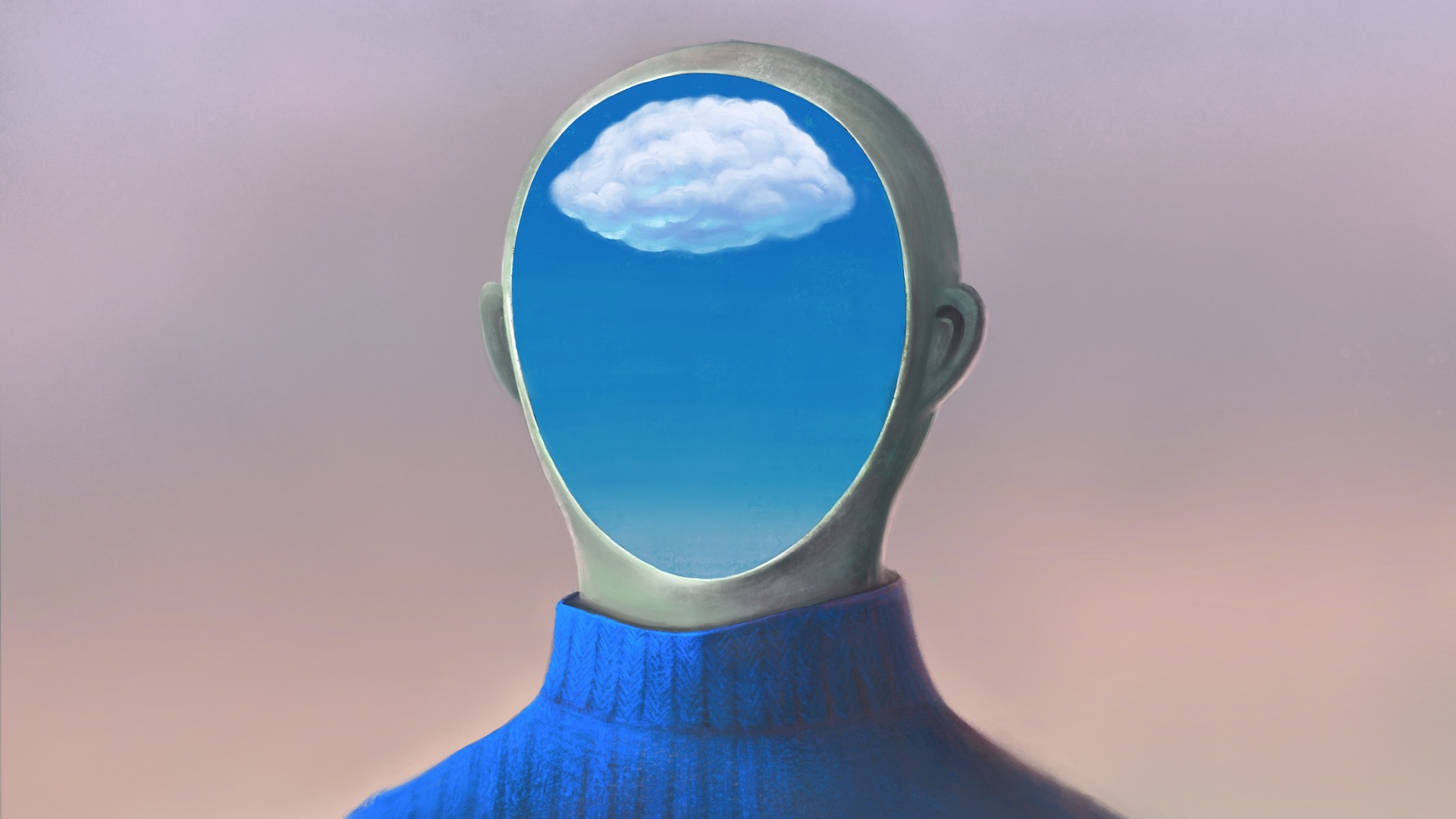What is aphantasia?
A small percentage of the population has aphantasia, meaning they're unable to visualize using their mind's eye. Learn about this condition and the neuroscience behind it.

Imagine you're on a beach. The rays of the setting sun color the sea surface orange and golden. Now, what do you see in your mind?
If you have a condition called "aphantasia," chances are, you see absolutely nothing in your imagination. Aphantasia is a condition where you're unable to picture things in your mind, and it affects between 2% and 4% of the population. Research on aphantasia is still limited, but scientists are beginning to learn more about what it is and why it happens.
Aphantasia was first described by the Victorian scientist Francis Galton in 1880, but few researchers took an interest in it over the next century. In 2015, neurologist Adam Zeman published a study about people with "blind imaginations" and proposed the term "aphantasia" to describe the condition.
Subsequent research has suggested that people's ability to visualize images exists along a spectrum. People with aphantasia are at the very bottom end. Some people can picture images but only very weakly — this is called hypophantasia. On the other end of the spectrum are people with hyperphantasia, who can picture images so vivid that they're practically indistinguishable from real life.
What causes aphantasia?
Scientists don't know exactly what causes most cases of aphantasia. Because it seems to run in families, it may have a genetic component. However, brain injury or stroke can also lead to aphantasia. Aphantasia likely occurs due to differences in brain function.
"When you try to imagine a picture, you are trying to re-create the same pattern of response in your brain as when you saw the image," Rebecca Keogh, a cognitive science research fellow at Macquarie University in Australia who studies aphantasia, told Live Science. "We think that [people with aphantasia] are not able to create the same pattern of response in their brains."
Researchers debate whether aphantasia occurs because people don't generate mental images at all or because something in their brain prevents them from being aware of mental images. Using a special experimental setup that primes people to imagine pictures projected at one of their eyes, Keogh conducted multiple studies that suggested people with aphantasia don't seem to make mental images at all. However, brain imaging research supports the notion that people with aphantasia can produce mental images but something in the "wiring" of their brain makes those images get lost in translation.
Get the world’s most fascinating discoveries delivered straight to your inbox.
Is there an aphantasia test?
If someone acquires aphantasia later in life after a brain injury, a physician may run diagnostic tests using MRI or EEG to look at changes in brain function. But normally, aphantasia is determined using questionnaires such as the Vividness of Visual Imagery Questionnaire (VVIQ). The VVIQ gives a score based on how clearly a person can visualize things in their imagination. A person with a low score is classified as having aphantasia.
How does aphantasia affect people?
Keogh said aphantasia doesn't seem to inhibit people's success in life. Her studies of aphantasia have included engineers, programmers and doctoral students.
A 2021 study by Keogh found that aphantasia doesn't affect performance on various visual memory tests. In that study, people with aphantasia reported that they simply used different strategies to solve the tests. Still, aphantasia might affect them in some ways, she said.
People with aphantasia have told Keogh that "they find remembering the past quite different to other people," she said. In a 2022 study about the autobiographical memory of people with aphantasia, she found that people with aphantasia could report fewer details about past memories than people who had a visual imagination. They also had a harder time remembering details about proposed future events.
"When we try to remember things from our past, most of us will find that it's like playing a movie in our mind; we can just relive that moment," Keogh said. For [people with aphantasia], it's more like a list of things that have occurred."
Some of the people in her studies also noted difficulties in recognizing faces and problems with spatial navigation.
"We are trying to find out exactly what they find easy to do and what they find difficult," Keogh said. She speculated that aphantasia could even have benefits that help them live more in the present, like not being disturbed by visual flashbacks from the past. Experiencing too much visual imagery from the past can be not only distracting but even disturbing, and it is frequently experienced by people with post-traumatic stress disorder, she said.
Keogh said that, in the future, it might be possible to give people with aphantasia the ability to visualize, either through training involving drawing and sketching, or by using gentle electrical stimulation.

You must confirm your public display name before commenting
Please logout and then login again, you will then be prompted to enter your display name.
